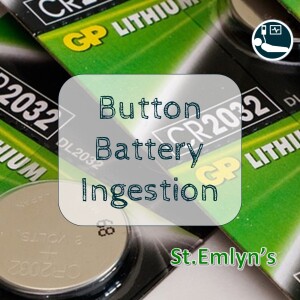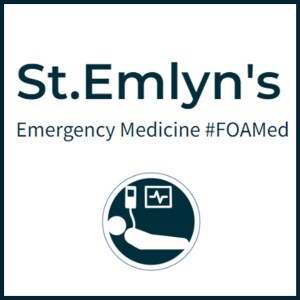
In this podcast from the PREMIER conference 2024, Francesca Stedman, a consultant paediatric surgeon from Southampton Children's Hospital discusses the care of the child who has ingested a button battery.
Button batteries are ubiquitous and come in various types and sizes. There are about 85 different kinds available or in use in the UK alone, found in everything from toys to hearing aids. The most notorious is the CR2032, which is about 20 millimeters in diameter and 3.2 millimeters thick. It contains lithium manganese oxide, and while its small size makes it convenient for electronics, it poses a significant risk if ingested.
The danger with button batteries lies in their potential to cause severe injuries when lodged in the esophagus. They can cause necrosis, which is essentially tissue death, due to a strong alkaline substance produced by the battery. This substance acts like a potent oven cleaner, rapidly causing damage. The esophagus has three natural narrowing points where these batteries often get stuck, increasing the likelihood of injury. The situation becomes critical very quickly, often within two hours of ingestion.
One of the most concerning aspects of these incidents is that button battery ingestions are rarely witnessed. Children might present with vague symptoms like drooling, difficulty swallowing, or even just being generally unwell. These can easily be mistaken for other common illnesses, leading to delays in diagnosis. In one particularly harrowing case, a child presented multiple times with symptoms of a respiratory infection, only for an x-ray to reveal a button battery lodged in the esophagus. By then, the damage was extensive.
When ingestion is suspected, immediate action is crucial. Getting a chest x-ray is the first step, and if necessary, a lateral x-ray can confirm the presence of a button battery by revealing a characteristic double rim or halo sign. Pre-hospital measures can include giving honey or jam, depending on the child’s age, to help mitigate the damage. However, these should never delay getting the child to the hospital.
Once at the hospital, the primary goal is to remove the battery as quickly as possible to prevent further injury. Depending on the location of the battery and available specialists, either ENT surgeons or paediatric surgeons may perform the removal. Post-removal care involves monitoring for complications like perforations or fistulas, which can develop days or even weeks later. In severe cases, these injuries can lead to life-threatening conditions, such as aorto-esophageal fistulas, which require immediate surgical intervention.
In summary, button battery ingestion is a serious and often underappreciated risk. Even in homes where precautions are taken, accidents can happen. The key is quick recognition and action. As parents and caregivers, we need to be vigilant about keeping these small, dangerous objects out of children's reach. And if an accident does occur, immediate medical attention is essential to minimize the risk of serious injury.
More details are available on the blogpost here.
More Episodes
 2019-11-02
2019-11-02
 3.0k
3.0k
 2019-10-14
2019-10-14
 11.7k
11.7k
 2019-10-06
2019-10-06
 3.0k
3.0k
 2019-10-05
2019-10-05
 3.1k
3.1k
 2019-09-10
2019-09-10
 4.0k
4.0k
 2019-08-31
2019-08-31
 3.9k
3.9k
 2019-07-14
2019-07-14
 3.9k
3.9k
 2019-07-04
2019-07-04
 4.7k
4.7k
 2019-06-21
2019-06-21
 4.0k
4.0k
 2019-06-07
2019-06-07
 6.3k
6.3k
 2019-05-30
2019-05-30
 4.4k
4.4k
 2019-05-19
2019-05-19
 4.9k
4.9k
 2019-05-01
2019-05-01
 4.5k
4.5k
 2019-04-24
2019-04-24
 3.7k
3.7k
 2019-04-13
2019-04-13
 3.7k
3.7k
 2019-04-10
2019-04-10
 4.1k
4.1k
 2019-02-23
2019-02-23
 4.2k
4.2k
Create your
podcast in
minutes
- Full-featured podcast site
- Unlimited storage and bandwidth
- Comprehensive podcast stats
- Distribute to Apple Podcasts, Spotify, and more
- Make money with your podcast
It is Free
- Privacy Policy
- Cookie Policy
- Terms of Use
- Consent Preferences
- Copyright © 2015-2024 Podbean.com




